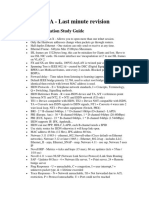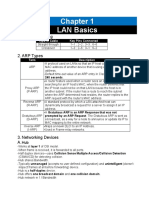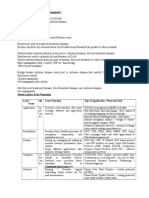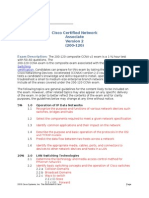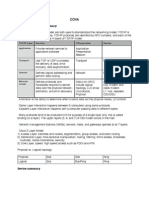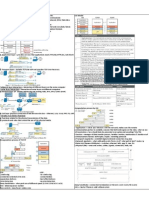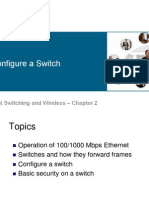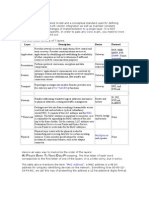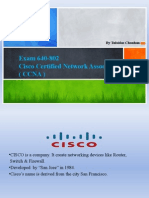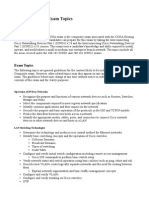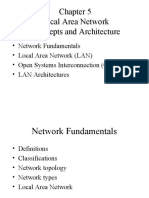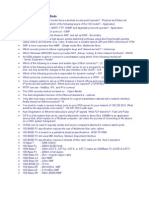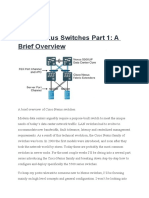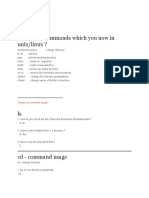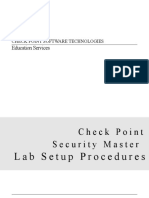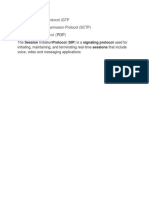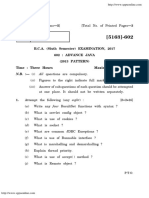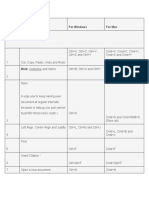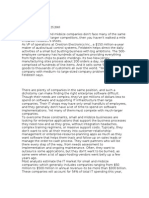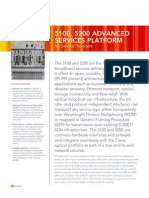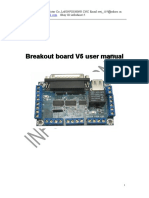0% found this document useful (0 votes)
111 views4 pagesCisco Ccna Last Minute Revision
This document provides a review of key concepts for the Cisco CCNA exam, including:
- Ethernet frame sizes, ISL frame encapsulation, and fiber vs copper media types.
- Spanning Tree Protocol concepts like BPDUs, forward delay time, and root bridge selection.
- ISDN protocols, reference points, and channel configurations for BRI and PRI.
- IPX addressing and Novell routing protocols like RIP and NLSP.
- Common port numbers for protocols like FTP, SMTP, DNS, and HTTP.
- IP addressing class types and reserved addresses like loopback and multicasting.
Uploaded by
Rakesh RakeeCopyright
© © All Rights Reserved
We take content rights seriously. If you suspect this is your content, claim it here.
Available Formats
Download as DOCX, PDF, TXT or read online on Scribd
0% found this document useful (0 votes)
111 views4 pagesCisco Ccna Last Minute Revision
This document provides a review of key concepts for the Cisco CCNA exam, including:
- Ethernet frame sizes, ISL frame encapsulation, and fiber vs copper media types.
- Spanning Tree Protocol concepts like BPDUs, forward delay time, and root bridge selection.
- ISDN protocols, reference points, and channel configurations for BRI and PRI.
- IPX addressing and Novell routing protocols like RIP and NLSP.
- Common port numbers for protocols like FTP, SMTP, DNS, and HTTP.
- IP addressing class types and reserved addresses like loopback and multicasting.
Uploaded by
Rakesh RakeeCopyright
© © All Rights Reserved
We take content rights seriously. If you suspect this is your content, claim it here.
Available Formats
Download as DOCX, PDF, TXT or read online on Scribd
/ 4
